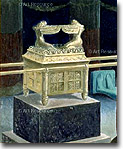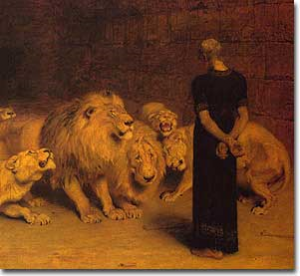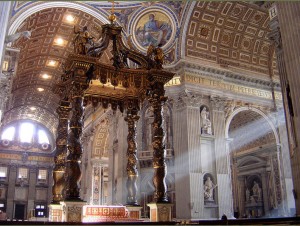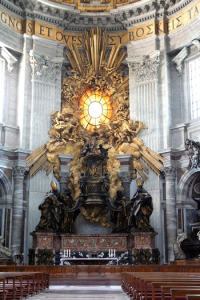 Remembering St. John Paul II’s call for a genuine “training in holiness” and “school of prayer” returns us to the study of Sacred Scriptures and seeking for additional tools to increase our appreciation of virtue through prayer.
Remembering St. John Paul II’s call for a genuine “training in holiness” and “school of prayer” returns us to the study of Sacred Scriptures and seeking for additional tools to increase our appreciation of virtue through prayer.
Directed by three major theological sources of instruction inspired by the Holy Spirit, the first of faith is established by the Patriarchs and the Law and the Prophets given in the five Books of the Pentateuch (Genesis, Exodus, Leviticus, Numbers, and Deuteronomy). They lead us with Mary in her reasoning for believing acceptance of the Archangel Gabriel’s words of salutation.
 The second of hope addresses our human concerns, needs and desires that the Prophets and People of Israel expressed (and later fulfilled within Christ) in the Psalms (comprising five Books of the Psalter in 150 Hymns of Praise).
The second of hope addresses our human concerns, needs and desires that the Prophets and People of Israel expressed (and later fulfilled within Christ) in the Psalms (comprising five Books of the Psalter in 150 Hymns of Praise).
And thirdly, the charity of God was experienced, recorded and succinctly revealed to us by the accounts of the life and teachings of the Son of God within the New Testament Gospel of Jesus Christ (the four Gospels of Matthew, Mark, Luke, and John, and often considered to include the Book of Acts) by those who witnessed these events of God’s Beloved Son.
 With an emphasis on contemplating the major covenants that are recognized as being fulfilled in the Glorious Mysteries – and the Psalms as our road map of prayer – we can see in wonderful conclusion that the Mass celebrated within Christ’s New Testament Church is in perfect relationship with the Old Testament as a combined account of the six days in creation and the seventh as our Sabbath day of rest and communal prayer.
With an emphasis on contemplating the major covenants that are recognized as being fulfilled in the Glorious Mysteries – and the Psalms as our road map of prayer – we can see in wonderful conclusion that the Mass celebrated within Christ’s New Testament Church is in perfect relationship with the Old Testament as a combined account of the six days in creation and the seventh as our Sabbath day of rest and communal prayer.
 By the Resurrection of Jesus as our New Creation on the eighth day, we witness how these unique meditations during Holy Week and the Easter Octave become compressed into thirty-five through the very responsible view of Christ’s Church and absolutely define the reason for Mary’s prayers to become our path of “Crossing the Threshold of Hope” to her Son as our Lord. This is understood when seeing God’s Gifts merged with prayer.
By the Resurrection of Jesus as our New Creation on the eighth day, we witness how these unique meditations during Holy Week and the Easter Octave become compressed into thirty-five through the very responsible view of Christ’s Church and absolutely define the reason for Mary’s prayers to become our path of “Crossing the Threshold of Hope” to her Son as our Lord. This is understood when seeing God’s Gifts merged with prayer.
As encouragingly experienced, these meditation prayers born in Mary’s Way cause us to ask after contemplation, “what ear would not hear nor eye not see” that the fruit of these extended prayers… are simply heavenly?
